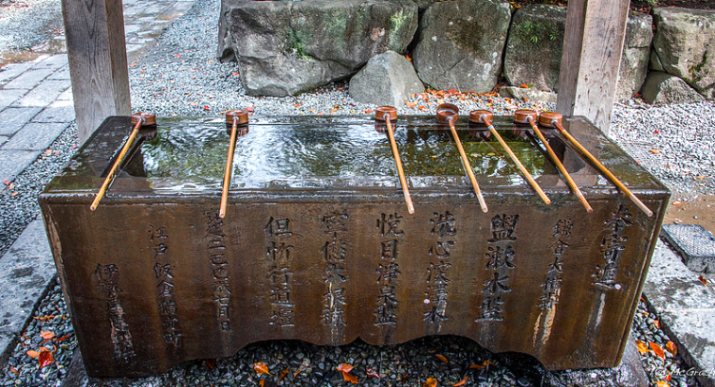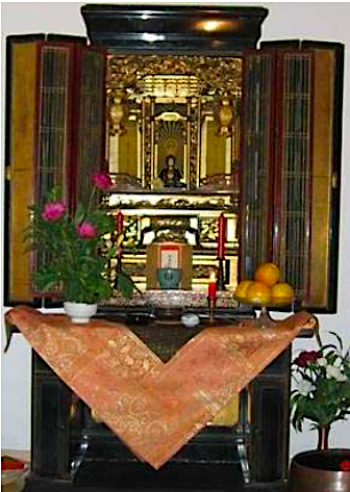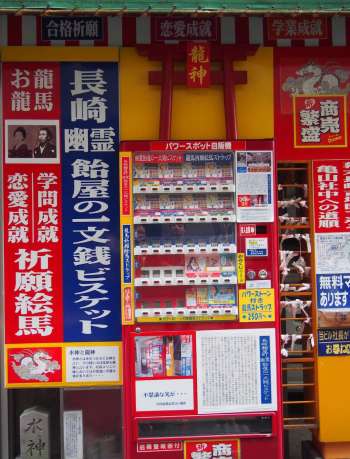As is well known, the term “religion” was translated into Japanese as “shūkyō” and introduced to Japan in the late 19th century by Amane Nishi (1829–97). This term was used to refer to systems of beliefs and practices imported from Europe and North America. “Shūkyō,” thus, designated systems of beliefs that focused on the (regular) worship of one deity, witnessed in one scripture, that demanded a certain set of morals. In addition, the term “religion” seems to imply a dualistic worldview, which distinguishes between the “religious” and the “non-religious,” the “secular,” or, as religious scholars would say, that which is outside our spatio-temporal world of experience (the transcendent) and that which is inside thereof (the immanent). The latter is “this” world of becoming, change, and suffering, the former the beyond, which is characterized by permanence and a general suspension of the laws of physics. Both definitions of “religion” are, of course, one-sided and antiquated, but they do explain why so many Japanese consider themselves “not religious,” even as they engage in noticeable “religious” activities, such the veneration of deities, and rituals that imply a more or less robust belief in an afterlife.
FEATURES|COLUMNS|Buddhism in Japan
“This Mind is the Buddha”* — Being Religious (in Japan)
 Temizuya: water basin to purify body, speech, and mind at Kotokuin Temple in Yokohama. From flickr.com
Temizuya: water basin to purify body, speech, and mind at Kotokuin Temple in Yokohama. From flickr.comIn the past four years, I have written 17 essays on Buddhism in Japan for Buddhistdoor Global. In these essays, I have explored a plethora of practices and beliefs in Japan that are, to varying degrees, associated with the Buddhist traditions. These essays may conjure up an image, which I think is quite correct, that religion is alive and well in Japan, albeit in the disguise of a society in the 21st century. Interestingly enough, this perception is at odds with the understanding that a lot of Japanese have of themselves. Scholars of religion as well as anyone familiar with Japan is aware of the phenomenon that many Japanese will deny that they are religious. This rather large group of Japanese includes not only people who subscribe to an anti-religious ideology but also people who attend religious ceremonies more or less regularly, believe in life after death as well as spirits, and possess a “Buddha altar” (Jap: butsudan) to commemorate the dead or a “God-shelf” (Jap: kamidana) to venerate Shintō deities in their home. I believe that the reason for this seeming tension (contradiction?) lies in the definition of religion and I would like a to introduce a concept of religion that is based on ideas developed by Japanese Buddhist thinkers.
 Butsudan: Buddhist home altar to commemorate deceased family members. From britannica.com
Butsudan: Buddhist home altar to commemorate deceased family members. From britannica.comIf we now turn to religion in Japan, we can recognize phenomena that conform to this definition and some that do not. To the former category belong Buddhist temples, Shintō shrines, and traditional teahouses whose architecture implies a dichotomization of our reality into two worlds; the workaday world and the divine. To move from one world to the other, especially from the workaday world to the world of divine, one has to pass through a gate, purify oneself at a specifically designated “water basin” (temizuya), and, in the case of traditional tea ceremonies, change one’s clothing. The official language inside the marked “sacred space,”** the liturgical language, is formalized and erases the social distinctions communicated by everyday Japanese. In the same way, such a two-world symbolism can be found in and is evoked by pilgrimages that invite the practitioner to leave their daily routine, go to a specially marked place, wear pilgrim’s robes, and engage in prescribed practices and liturgies. Religious experts such as priests and shamans are people who traverse and communicate between these two worlds.
This dualism of the religious worldview can be exemplified with some of the movies made by Studio Ghibli. While filmmaker Hayao Miyazaki frequently denies that his movies deal with religious ideas, his Princess Mononoke (Mononoke hime) and Isao Takahata’s Pom Poko (Heisei tanuki gassenponpoko) illustrate this religious worldview quite well. In both movies the human world is at odds with nature, which is inhabited by spirits and gods. Humans encroach on nature with their technology and urban expansions and thus threaten not only the animals and spirits living in the forest and mountains but their own spiritual core as well. In the end humans and nature strive to maintain a balance, even if it is an uneasy one, and avoid the domination of one realm over the other.
 Shintō shrine vending machine in Nagasaki. Photo: by Yōko Seki, University of Nagasaki
Shintō shrine vending machine in Nagasaki. Photo: by Yōko Seki, University of NagasakiThe erosion of the rigid duality between the spiritual and the human realm indicated in these movies is even more visible in other phenomena of religion in Japan. The extreme and now illegal practice of self-mummification (sokushinbutsu)*** at a few Shingon temples in northwest Japan and the general notion that “buddhahood” can be attained through the practice of “self-cultivation” (shugyō) “in this body” (sokushinjōbutsu)**** are founded on the belief that it is possible for the human body to be transformed in the body of Buddha. This means, however, that there is no real distinction between humanity and buddhahood, this world and the beyond. This should come as no surprise to the reader familiar with Mahāyāna Buddhism, whose thinkers proclaim, for the most part, that saṃsāra and nirvāṇa, and this means for the scholar of religion, immanence and transcendence, are not different from each other.
This collapse of the religious and the secular may come as a shock for the religious studies scholar trained in Europe or the Americas, but pervades the phenomena of Japanese religions.This Mahāyāna core belief serves not only as the rationale of the more hardcore practices of the Buddhist schools in Japan discussed above, but also for the various forms of socially engaged Buddhism.***** It also provides the theoretical explanation for practices aimed at “this worldly benefits” (genze riyaku), such as the purchase of amulets or the performance of pilgrimages and rituals to gain merit, health, a job, graduation for oneself or a family member. The most extreme example of these practices to obtain genze riyaku is a Shintō shrine vending machine I found in Nagasaki. I believe that, to differing degrees, all these practice express the collapse of the division between immanence and transcendence and thus embody and illustrate, in one way or another, that “this mind is the Buddha.”
* Takakusu, Junjirō and Kaigyoku Watanabe, eds. 1961. Taishō Taizōkyō (The Taishō Edition of the Buddhist Canon). Tokyo: TaishōShinshū Daizōkyō Kankōkai.
** For the classical description of “sacred Space” see Mircea Eliade’s The Sacred and the Profane.
*** How to Face Death - Pilgrimages and Death Rituals in Japanese Buddhism (Buddhistdoor Global)
**** Becoming a Buddha – A Shingon Buddhist 10-step Program (Buddhistdoor Global)
***** Meaning in the Face of Transience: Reflections of Socially Engaged Buddhists in Japan (Buddhistdoor Global)
Related features from Buddhistdoor Global
What are these Statues for?
Book Review: Approaching Buddhism—An Introduction to the Buddhist Tradition from the Pure Land Perspective
Does a Philosopher Have Buddha-nature?














